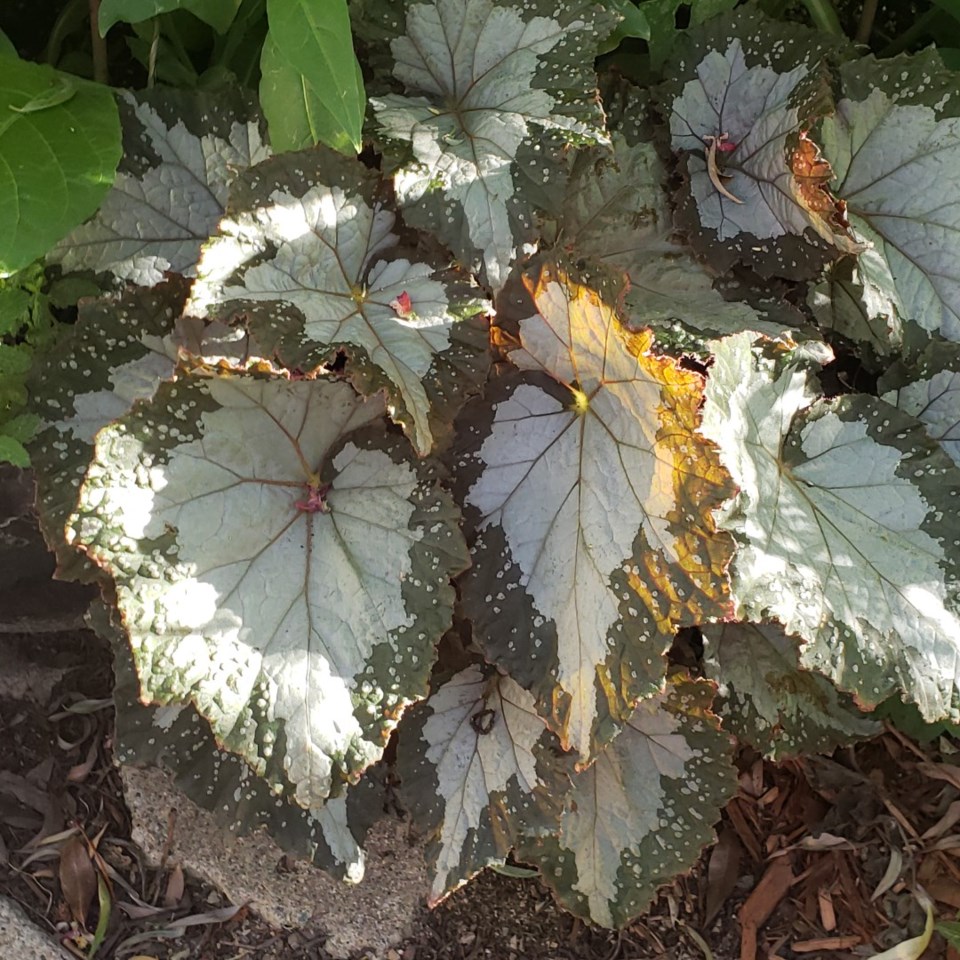Begonias have been around since Victorian times, and have long been a favourite. They are actually native to Â鶹ĘÓƵ America, and have thousands of species that you might like to grow. They are relatively easy to grow, have attractive foliage and can grace your home in the winter months with relative ease.
Sometimes begonias are a bit confusing as they have actually three types of root structures: tuberous, fibrous or rhizomatous. Tuberous begonias have a fleshy underground root structure and will generally require a rest period at some point during the year. This begonia is not usually grown indoors but is great to have outside in your garden. Rhizomatous begonias have an above-ground or slightly below-ground creeping stem that roots wherever it contacts moist soil. Fibrous begonias have a very fine, dense root system with no taproot, and these have the most variation in foliage and growth habit.
Begonias are grown for a variety of reasons – their wonderful foliage, their colourful flowers, or sometimes both. The “Rex” begonias are hybrids that are without doubt one of the best foliage plants.
There is also a group of fibrous-rooted begonias, commonly known as Angel wing (due to their leaf shape) that are coveted as houseplants in temperate climates. Angel wing begonias have hanging clusters of white, pink or red flowers that can be up to 30 cm (12 in.) across. The larger the leaves of the cultivar, the larger the flower clusters.
Wax begonias are often considered the bedding plant of begonias. They typically have light green foliage or foliage that is edged with red, or sometimes is a deep bronze colour. There are variegated cultivars as well. Flowers are numerous and continuous in shades of red, pink or white with some cultivars having double and two-toned flowers.
If you are looking for an ideal houseplant, the begonia is an excellent choice. In your home place your plant in a well-lit area. Rex begonias like a few hours of direct morning or late afternoon sun and a north window with no curtains, trees or overhangs is also acceptable.
Placing your begonias to the side of a window or far back in the room will result in light-starved, spindly plants. This is not conducive to optimum growth. Your begonia will be happy if it receives a few hours of direct sunlight, avoiding hot afternoon sun in the summer.
As long as you have given your begonia adequate light, it will grow quickly. If it begins to seem like it is out of proportion with its pot, or begins to dry out faster than normal, it is time to transplant it into a larger container. Feel free to upgrade the pot size by a couple of inches as begonias are rather forgiving. Give the pot a gentle squeeze to loosen the rootball and gently wiggle the pot away from the soil. Pot up with any all-purpose soil as begonias are not fussy about soil.
Treat as you would any houseplant and water weekly. It might be beneficial to fertilize with a dilute solution of high phosphorus fertilizer to ensure that the bloom occurs often.
Hanbidge is the Lead Horticulturist with Orchid Horticulture. Find us at ; by email at [email protected]; on facebook @orchidhort and on instagram at #orchidhort. Tune into GROW Live on our Facebook page or check out the Youtube channel GROW




